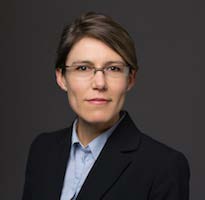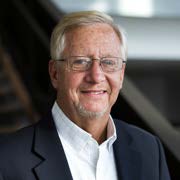 Abstract: Radiative heat transfer between closely spaced objects can be greatly enhanced at nanoscale separation. Furthermore, the interaction of electromagnetic waves with micro/nanostructured materials can potentially modify their far-field radiative properties. Recent advances in graphene and other two-dimensional (2D) materials offer enormous potential to transform current microelectronic, optoelectronic, photonic devices, as well as energy systems. As a layered 2D material with carbon atoms arranged in a honeycomb lattice, graphene has unique electronic, thermal, mechanical, and optical properties. Exotic radiative properties and near-field enhancement can be enabled by graphene-covered micro/nanostructures, including perfect absorption, blocking-assisted transmission, and giant near-field radiative transfer. As a natural hyperbolic material, hexagonal boron nitride (hBN) can support multiple orders of phonon-polariton waveguide modes in its two infrared Reststrahlen bands. We have theoretically demonstrated that hybrid graphene-hBN-film heterostructures can significantly augment photon tunneling. Furthermore, hBN-covered metal-gratings and gratings made of hBN exhibit unique radiative properties for the spectral and directional control of thermal radiation. In addition to the theoretical findings, I will also present some measurement results of near-field thermal radiation between flat plates and far-field spectral radiative properties of nanostructured materials.
Abstract: Radiative heat transfer between closely spaced objects can be greatly enhanced at nanoscale separation. Furthermore, the interaction of electromagnetic waves with micro/nanostructured materials can potentially modify their far-field radiative properties. Recent advances in graphene and other two-dimensional (2D) materials offer enormous potential to transform current microelectronic, optoelectronic, photonic devices, as well as energy systems. As a layered 2D material with carbon atoms arranged in a honeycomb lattice, graphene has unique electronic, thermal, mechanical, and optical properties. Exotic radiative properties and near-field enhancement can be enabled by graphene-covered micro/nanostructures, including perfect absorption, blocking-assisted transmission, and giant near-field radiative transfer. As a natural hyperbolic material, hexagonal boron nitride (hBN) can support multiple orders of phonon-polariton waveguide modes in its two infrared Reststrahlen bands. We have theoretically demonstrated that hybrid graphene-hBN-film heterostructures can significantly augment photon tunneling. Furthermore, hBN-covered metal-gratings and gratings made of hBN exhibit unique radiative properties for the spectral and directional control of thermal radiation. In addition to the theoretical findings, I will also present some measurement results of near-field thermal radiation between flat plates and far-field spectral radiative properties of nanostructured materials.
Biographical Sketch: Professor Zhuomin Zhang earned a Ph.D. degree from MIT and worked at NIST and University of Florida prior to joining Georgia Tech, where he currently is a professor in mechanical engineering. He received his B.S. and M.S. degrees from the University of Science and Technology of China (Hefei). He is a Fellow of AAAS, ASME, and APS. Professor Zhang’s research interests are in micro/nanoscale heat transfer, especially thermal radiation for energy conversion and temperature measurement. He has written a book, Nano/Microscale Heat Transfer, co-authored over 180 journal papers and 10 book chapters, and given over 370 invited and contributed presentations. Some of his former students have established independent careers at major universities and industry in the United States, China (mainland and Taiwan) and South Korea. In addition, Professor Zhang has supervised many visiting scholars, postdoctoral fellows and undergraduate student researchers. He served as the Program Chair of the ASME 3rd Micro/Nanoscale Heat & Mass Transfer International Conference (Atlanta, March 2012), Chair of the 2nd International Workshop on Nano-Micro Thermal Radiation (Shanghai, June 2014), and General Chair for the ASME 5rd Micro/Nanoscale Heat & Mass Transfer International Conference (Singapore, January 2016). He currently serves as an associate editor of the Journal of Thermophysics & Heat Transfer and Journal of Quantitative Spectroscopy & Radiative Transfer. Professor Zhang was a recipient of the 1999 Presidential Early Career Award for Scientists and Engineers (PECASE) and the 2015 ASME Heat Transfer Memorial Award (in the Science category). He has also won a number of teaching, research, and best paper awards.

